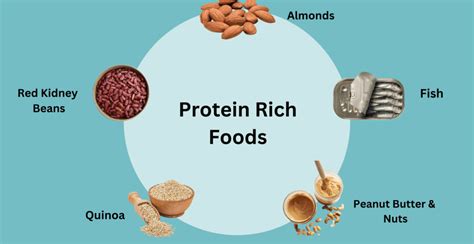Optimal macronutrient ratio for peak strength, energy & fat loss?

Decoding Macronutrients: The Key to Your Goals
In the vast world of nutrition, few topics generate as much discussion and confusion as macronutrient ratios. Protein, carbohydrates, and fats are the three pillars of our diet, each playing distinct yet interconnected roles in bodily functions, performance, and body composition. Understanding how to optimally balance these for your specific goals – whether it’s building strength, maintaining boundless energy, or shedding stubborn fat – is a powerful tool for transforming your health and physique.
There’s no single ‘magic’ ratio that fits everyone, as individual needs vary based on activity level, metabolism, body type, and specific objectives. However, by understanding the fundamental roles of each macronutrient, you can tailor an approach that works best for you.

The Role of Each Macro: Fueling Your Body
Protein: The Building Block
Protein is crucial for muscle repair and growth, enzyme production, hormone synthesis, and immune function. It’s particularly vital for those focused on strength and muscle preservation during fat loss. High protein intake also contributes to satiety, helping manage hunger.
Carbohydrates: The Primary Energy Source
Carbohydrates are your body’s preferred fuel, especially for high-intensity activities and brain function. They replenish glycogen stores in muscles and the liver. Complex carbohydrates offer sustained energy, while simple carbs provide quick bursts.
Fats: Essential for Hormones and Absorption
Dietary fats are critical for hormone production, nutrient absorption (especially fat-soluble vitamins A, D, E, K), insulation, and cell membrane integrity. Healthy fats are also important for satiety and can be a significant energy source, particularly during lower-intensity, longer-duration activities.

Macronutrient Ratios for Peak Strength
For individuals primarily focused on increasing strength and muscle mass, the emphasis typically shifts towards adequate protein and carbohydrates to fuel intense workouts and facilitate recovery.
- Protein: 1.6-2.2 grams per kilogram of body weight (0.7-1.0g/lb). This ensures sufficient amino acids for muscle protein synthesis and repair.
- Carbohydrates: 3-6 grams per kilogram of body weight (1.4-2.7g/lb). These are essential for replenishing glycogen stores, providing energy for heavy lifts, and preventing muscle breakdown. More active individuals may need the higher end of this range.
- Fats: 20-30% of total daily calories. Healthy fats are important for hormone production (like testosterone, crucial for strength) and overall health.
A common starting point might be around 30-40% Carbs, 25-35% Protein, 20-30% Fat, adjusted based on training volume and individual response.

Macronutrient Ratios for Sustained Energy
Maintaining consistent energy levels throughout the day without crashes often involves a balanced approach, prioritizing complex carbohydrates and healthy fats, with sufficient protein for repair and satiety.
- Carbohydrates: 45-60% of total daily calories. Focus on complex carbohydrates like whole grains, fruits, and vegetables to provide a steady release of glucose.
- Protein: 20-30% of total daily calories. Adequate protein helps stabilize blood sugar and prevents energy dips.
- Fats: 20-30% of total daily calories. Healthy fats, especially from sources like avocados, nuts, seeds, and olive oil, provide sustained energy and support brain function.
This approach helps avoid the blood sugar spikes and crashes associated with high intake of refined sugars, promoting stable energy and mental clarity.

Macronutrient Ratios for Effective Fat Loss
The core principle of fat loss is consuming fewer calories than you expend. Within this calorie deficit, macronutrient ratios play a crucial role in preserving muscle mass, controlling hunger, and optimizing metabolic function.
- Protein: 1.8-2.7 grams per kilogram of body weight (0.8-1.2g/lb). Higher protein intake is paramount during fat loss to preserve lean muscle mass, increase satiety, and boost the thermic effect of food (the calories burned digesting food).
- Carbohydrates: 20-40% of total daily calories. This range can vary widely. Some individuals thrive on lower carb approaches (e.g.,
- Fats: 20-30% of total daily calories. Sufficient healthy fats are still essential for hormonal balance and satiety, even during a calorie deficit.
A common starting point for fat loss could be 40% Protein, 30% Carbs, 30% Fat, but it’s crucial to adjust based on hunger, energy levels, and progress.

The Individual Equation: Listening to Your Body
While these guidelines provide excellent starting points, remember that individual responses to macronutrient ratios can vary significantly. Factors like genetics, gut microbiome, stress levels, sleep quality, and specific training protocols all influence how your body utilizes macros.
The best approach is to:
- Start with a guideline: Choose a ratio that aligns with your primary goal.
- Track your intake: Use an app or journal to log your food for a few weeks to understand your current habits and how they align with your chosen ratio.
- Monitor your progress: Pay attention to your energy levels, strength performance, body composition changes, hunger, and overall well-being.
- Adjust incrementally: If you’re not seeing the desired results or feeling optimal, make small, targeted changes to your macro ratios and observe the effects.
Conclusion
Optimizing your macronutrient ratios is a powerful strategy to unlock your full potential for strength, energy, and fat loss. By understanding the unique contributions of protein, carbohydrates, and fats, and by being willing to experiment and listen to your body, you can craft a personalized nutrition plan that supports your goals and enhances your overall health. Consistency and adherence to a balanced diet, tailored to your needs, will always be the most crucial factors in achieving lasting success.








